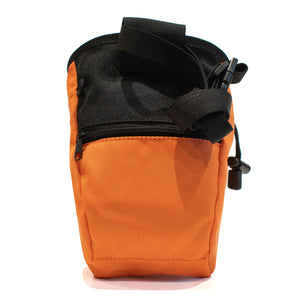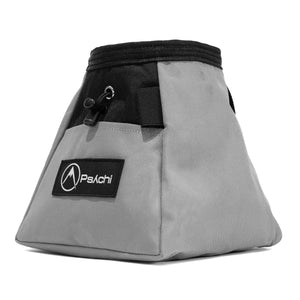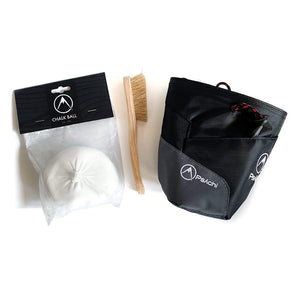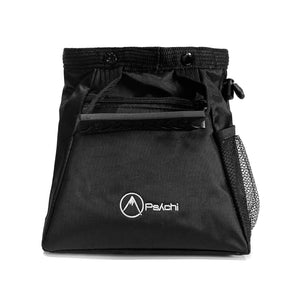EVERYTHING YOU NEED TO KNOW ABOUT THE 2024 OLYMPIC CLIMBING FORMAT AND SCORING
Changes To Sport Climbing Format
After the success of Tokyo 2020 climbing is back at Paris 2024 with a brand new format. It’s been tough keeping up with how climbing is going to be scored. We’ve summarised the Paris 2024 Climbing scoring system here, allowing you to follow the excitement to come this summer!
Tokyo 2020 was a three-pronged format with speed, lead and boulder as a combined event with Janja Garnbret and Alberto Gines Lopez walking away with Golds.
Paris 2024 will see speed climbing separated to become a stand-alone discipline, whilst lead climbing and bouldering will remain a combined event. This will double the amount of medals available with male and female podiums in the two events (Speed & Lead/Boulder).
Many in the climbing world believe this is a superior format to that of Tokyo, as it means that the lead and boulder athletes will not have to participate in a speed climbing event that they rarely train for. Speed climbers can also focus on their discipline and put on a show without the worry of Lead/Boulder. The structure of this format will see the best of the best shine in their discipline but may mean fewer surprises when it comes to who comes out on top.
WHAT ARE THE THREE CLIMBING DISCIPLINES AT THE OLYMPICS & HOW ARE THEY SCORED?
LEAD CLIMBING
When people think of climbing, they may first think of a climber attached to a rope, scaling a tall face with a belayer below them - this is lead climbing. Climbers clip quickdraws as they climb, and climbers score points as they ascend the route.
Athletes will climb a single route in each round; qualifying, semi-finals and finals. They score points for successfully holding the top 40 holds, the number of points scored for each hold will increase as they move higher on the wall.
If we say, for example, there are 50 holds on a route, this is how athletes will be scored from top to bottom:
TOP
10 Holds - 4 Points
10 Holds - 3 Points
10 Holds - 2 Points
10 Holds - 1 Point
10 Holds - 0 Points
BOTTOM
If an athlete is moving towards the next hold but fails to securely get to and hold it, they will be awarded +0.1 points on top of their previous score.
Lead Climbing tests athletes' endurance as they attempt to climb as high as they can on a wall in the allotted time. The higher they reach, the higher they score.
BOULDERING
Bouldering competitions are fought out on shorter, powerful routes above matting. Athletes will tackle 4 boulder problems (sometimes referred to as blocs) with the aim of getting to the top of as many as possible in as few attempts in the time given. In bouldering, attempts and holds marked as zones come into play to influence the final score. In the 2024 Olympics, 2 holds will now be marked as zones, making a change from a single zone hold in IFSC World Cups.
What is a zone?
A zone in climbing is a hold that is marked as a zone hold. It usually identifies a point within a climbing problem that is difficult to get to, therefore rewarding the climber for overcoming a difficult section of a climb. This means that climbers may still score some points, even if they do not reach the top. Some climbers may use this as a tactic. If they don’t feel like they can top a boulder in the allotted time or want to save energy and skin, climbers may prioritise at least making it to the zone hold.
Having 2 zone holds in the Paris Olympics will allow the field of competitors to be divided in a more defined way, making it easier to determine a clear winner.
Olympic Boulder Scoring
Athletes score 25 points for reaching the top hold in a single attempt, referred to as a flash. 10 points are awarded for successfully controlling the highest zone hold, 5 points for the first zone hold and 0.1 is deducted for each failed attempt before securing the hold. Failed attempt points are only deducted from the score of the top or zone hold reached until the climber secures that hold, further points will not be deducted for subsequent attempts to get higher on the climb.
For example: A climber reaches the second zone hold in 3 attempts, giving them a score of 9.8, but they still have time on the clock. They then try to reach the top hold 2 more times, securing the top hold in the second attempt. This means they have scored 25 points in a total of 5 attempts, leaving them with a final score of 24.6 for that boulder. (25-(4 x 0.1) = 24.6)
Combined Boulder & Lead Score Explained
In Tokyo, the scores from each discipline were multiplied by each other to achieve a final score. This led to some interesting results, since climbers that came top in only one discipline shot to the top of the score table. It also led to a lot of confused spectators and coaches, trying to do some quick maths to forecast results!
Thankfully, at the Paris Olympics, they have simplified the process. The combined score that defines an athlete’s final score, is calculated by simply adding their scores from both lead climbing and bouldering rounds. The maximum points an athlete can score is 200 points.
SPEED CLIMBING
Speed climbing sees two climbers race side by side on a 15m standardised route that is the exact same as every other competition, the aim being to complete the run in the quickest possible time. The reason we call it a run is because climbers complete the climb in an almost vertical run.
The Speed Climbing rounds consist of a seeding qualification round, followed by quarter-finals, semi-finals and a big and small final which decide gold, silver, bronze and fourth.
We know, we were a bit confused to start with too. So we made you a diagram, in the hope that it clears up the speed climbing scoring somewhat!

Olympic Climbing Qualification
There will be a total of 68 athletes at the Olympics in Paris, 28 in Speed and 40 in Lead/Boulder, these being split equally between Male and Female
Lead and Boulder
20 Male
20 Female
Speed
14 Male
14 Female
There are a host of qualification events, with varying Olympic tickets available.
- The IFSC World Championships in Bern, Switzerland (Aug 23) was the first event with 10 Olympic tickets for both Speed and Lead/Boulder combined.
- The IFSC continental championship qualifying events (September- Dec 2023) give 20 athletes the opportunity to qualify for Paris 2024.
- Two invitational Olympic Qualifiers in Shanghai (May 2024) and Budapest (June 2024), 80 athletes will be invited to compete in these events based on the 2023 rankings and there are 16 Olympic tickets up for grabs.
Climbing at the Paris Olympics
Climbing at the Olympics is set to be an exciting event, even more so now that you understand what on earth is happening with the scoring! We can’t wait to see who is going to come out on top, after years of hard work and dedication from the climbers competing.
The Paris Olympics 2024 is set to take place from the 26th of July until the 11th of August, more information about the Sport Climbing schedule and format can be found on the IFSC website.




































